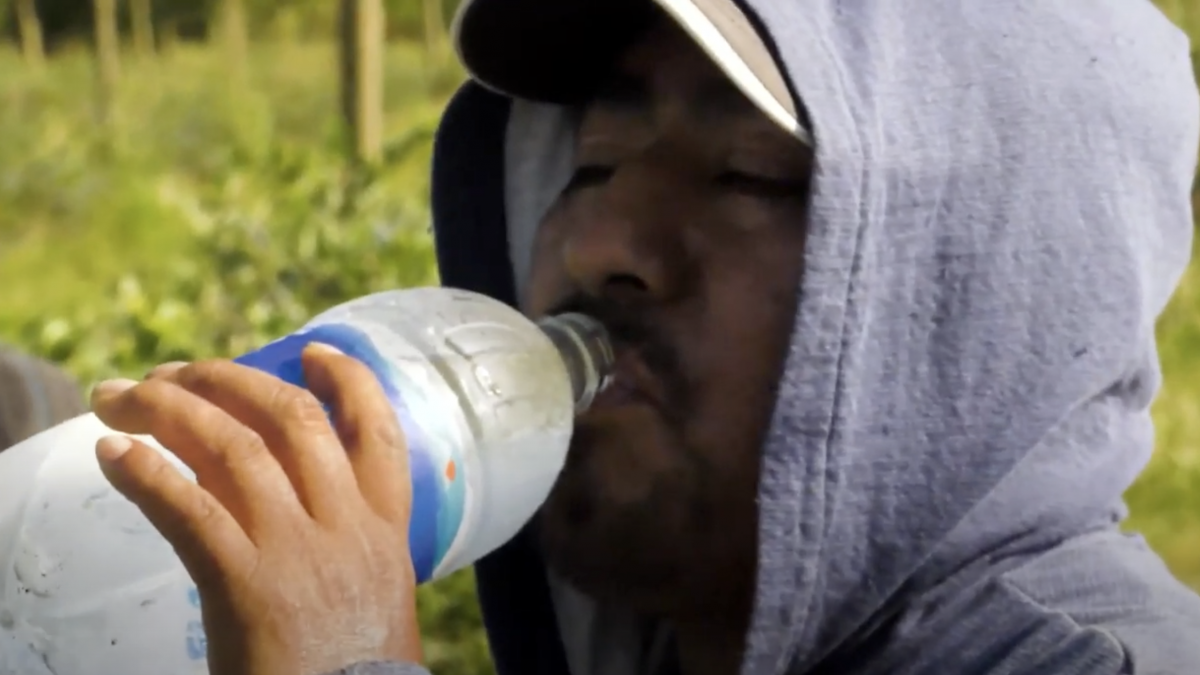
Facing risks to put food on our tables
While shopping in the produce section, or preparing a meal, the average American may not think about the workplace health and safety risks faced by the agriculture workers who get food from farms to our tables. However, for Northwest Center for Occupational Health and Safety Occupational Health Services Research PhD trainee, Erica Chavez Santos, evaluating and reducing hazards for agriculture workers is a passion.
"Agricultural work is hard, and it’s work that everyone benefits from", says Erica, "It’s where our food comes from. I come from a farmworker background myself, so I have a lot of respect for agricultural workers. My parents were farmworkers, and I worked in the orchards growing up too. I know it’s hard work."
Agricultural work is labor-intensive, and farmworkers endure very harsh working conditions, including exposure to heat. Overexposure to heat can cause serious health effects including heat rash, heat cramps, heat exhaustion, and heat stroke - a life threatening condition. Health effects of heat exposure are of particular concern during higher temperature summer months.
The HEAT team takes on heat-related illness
During the summer of 2019 Erica worked with the Pacific Northwest Agricultural Safety and Health Center's Heat Education and Awareness Tools (HEAT) study team - HEAT partners with advisors, including grower, worker, and community advisors, to test the effectiveness of a multi-level approach to reduce adverse health effects of overexposure to heat among agricultural workers. This approach includes a training for workers that addresses individual and community level factors, and a heat awareness application for supervisors focused on workplace heat-related illness prevention.
Erica assisted the HEAT team with measuring heat exposure symptoms and heat strain among workers by using self-report data, and by collecting physiological data to estimate core body temperature. Self-report data was collected using weekly check-in surveys and participant calls to review any heat exposure symptoms they experienced, and type of work they completed that week.
The HEAT team also used personal ambient temperature sensors and heart rate chest band monitors on participants, took notes on clothing and hydration, and measured ear temperature, height, weight, and resting heart rate of participants.
"I loved working with the HEAT study team. It was hard work, long days, and a lot of troubleshooting, but I learned so much", says Erica, "This was my first-time being part of a field collection team and I really admired how dedicated the team is. I bonded with many participants through the fieldwork days and the weekly check-in calls, and I think it was one of my favorite parts of working on the study. I enjoyed getting to know participants and learning about what they were most curious about, what questions they had, what their main concerns were, and what they liked or didn’t like regarding the study."
Next steps for turning down the temperature of heat-related illness risks
"One limitation and my main frustration is that, structurally, the work conditions of agricultural workers are not conducive to promoting health and well-being", says Erica, "In our HEAT intervention training, we recommend drinking adequate amounts of water and taking breaks if workers start experiencing heat-related illness symptoms. However, during some of the hotter summer waves, workers are harvesting and usually getting paid piece-rate (by how much they can pick during their shift), and when workers are racing with time so they can make their livelihood, it makes it difficult to prioritize their own health."
Moving forward, the HEAT research team will now work evaluate the data the collected to determine the effectiveness of their training and employer app interventions in reducing heat-related illness symptoms and heat strain among farmworkers, and add to current knowledge about ways reduce adverse heat health effects among farmworkers.
Putting passion to work
"Being part of this project was a really meaningful experience for me", says Erica, "The reason I decided to pursue public health was because I witnessed many Latinx families in my own community experience many health inequities. My parents sacrificed a lot and worked really hard, so I didn’t have to continue working in physically demanding jobs like they do. I know that structurally, the educational system makes it super difficult, if not impossible, for students like me to pursue higher education. Additionally, students from backgrounds like mine don’t usually make it into PhD programs. As I’m learning to navigate academic culture and spaces, I don’t take for granted that I get to do what I do. One day, I’ll get to do work that changes policy. I want to create more inclusive labor laws and policies for farmworkers and other low-wage workers in WA. I’m so grateful to have been part of this research project, and I look forward to learning more this upcoming summer!"
Jen Krenz, MS MPH, Maria Blancas, MPH, Erica Chavez Santos, MPH, Elizabeth Torres, BA, Pablo Palmandez, MS, Jose Carmona, MPH, and June Spector, MD MPH (Principal Investigator) make up the Heat Education and Awareness Tools (HEAT) Study Multi-level HRI Prevention Research team.
This article was originally published on the NWCOHS blog. Photo Credit: Pacific Northwest Agricultural Safety and Health Center


